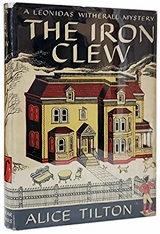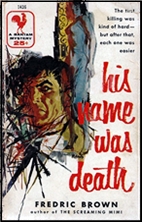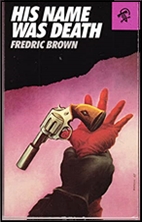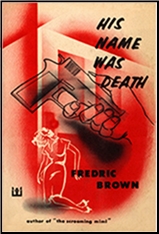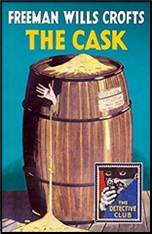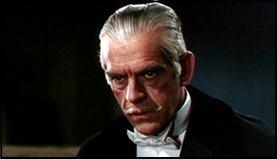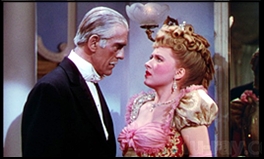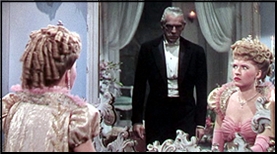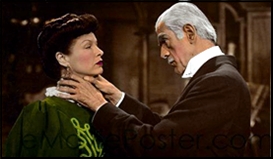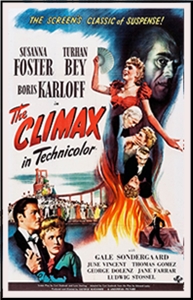REVIEWED BY DAVID VINEYARD:
DAVID HUME – Invitation to a Grave. Mick Cardby #? Collins Crime Club, UK, hardcover, 1940. No US edition.
“The first figure I see in that doorway I’ll drop … and this close I couldn’t miss if I closed my eyes and fired blind… Maybe they’d like to die suddenly. Well if they do they’ve never been given a better chance than they get now.â€
Mick Cardby in a tight spot in Invitation to a Grave.
The British Private Eye story started about a decade later than it’s American cousin, and really didn’t take hold of the public imagination until the mid to late Thirties. Not that there hadn’t been private detectives in British fiction earlier. From consulting detective Sherlock Holmes to the likes of Sexton Blake, Arthur Morrison’s Martin Hewitt, and Dick Donovan, they just tended to run on very different lines than the American model, mostly gentlemen, though Dick Donovan could be a little rough around the edges and Martin Hewitt was decidedly middle aged and middle class.
Once in a while one of the Golden Age amateur sleuths would open a detective agency for the sheer fun of it, and a few of the gentleman crooks and adventurers like Anthony Armstrong’s Jimmy Rezaire, Frank King’s the Dormouse, Hugh Cleveley’s Maxwell Archer, and Wyndham Martyn’s Anthony Trent had offices at one time or another. Even Arsene Lupin took a turn as Jim Barnett, an American private detective in blue spectacles in Paris, while Harry Dickson was the German then French Sexton Blake. G. K. Chesterton’s Flambeau reformed and became a private eye, but as with most of the British entries he was a far cry from Philip Marlowe or Sam Spade
It was Peter Cheyney, first with G-Man Lemmy Caution then with British eye Slim Callaghan, who really kicked the door in. Then with the success of James Hadley Chase’s mock American eyes suddenly the British thriller genres was overrun with fedoras, trenchcoats, wisecracks, and gats.
Gerard Fairlie who had penned adventures of the Vulture, Victor Caryl, and Bulldog Drummond (who was based on him) had ex-Yard man turned eye Johnny McCall narrating his own adventures in proper Cheyney style, John Bentley gave us Dick Marlow who took to Rye and Brandy in his titles and got involved in standard thriller fare but with a tough guy voice, John Creasey, whose Toff acted a bit like an unpaid eye, gave us twin private eyes Richard and Martin Fane (named after his sons), Basil Copper gave us yet another faux American eye by the name of Mike Faraday, E. Quinn Baker (a woman) even anticipated the voice of Raymond Chandler with her ex-Yard man/ex-con private eye James Strange, and Peter Cheyney expanded his base with Johnny Vallon, Nick Bellamy, and a string of one-off private eye heroes. In later years even a lot of the gentlemen crooks behaved less like crooks than private eyes and secret agents including the Saint once in a while.
But for my money the best of the lot of the British eyes from the first era, the top of the heap, was David Hume’s rough tough fast-quipping boy Mick Cardby.
Mick is quite the lad. His father, Mick Senior ex-Inspector Cardby of the Yard, runs Cardby and Cardby Investigations with youngster Mick II (never junior) as his partner in an adjacent office (they share a sexy secretary who has a no funny business rule). Senior is a tough old bird, but he has nothing on Mick, who, while often referred to in terms of his relatively young age, is as tough with his fist and fast with his gun as Race Williams in his heyday, if not a great deal smoother in patter when exchanging fists or lead
Mick is a long way from Bulldog Drummond’s drivel or the Saint going poetic. His grammar is colored with British street slang and his attitude much less gentlemanly.
Rough edges, our boy Mick. Decidedly rough edges. It helps he is as devious as Sam Spade, as slippery as Slim Callaghan, and like Michael Shayne isn’t afraid to use brains or fists.
This young Cardby might talk like a fool at times, but the levity was a pose, a rest from sterner stuff.
His milieu is the same as Hume’s great model Peter Cheyney: the West End night clubs where slinky chanteuses belt out sultry songs in dark clubs filled with blue gray cigarette smoke, and, more often than you might expect in London, the smell of cordite, and the East End slums where criminals drop their ’haitches and acknowledge Mick as “Guv”.
The British model came out of the British weekly paper The Thriller, which was to the gentleman crook and adventurer what Black Mask was in this country to the private eye. Early on Hume contributed some decent Scotland Yard tales in an Edgar Wallace vein there, but it was with Mick Cardby his fortunes blossomed.
And it’s not surprising. Mick is an attractive lad, handsome, tough, fast on his feet and not afraid of crook or cop, his relationship with Scotland Yard a complex one, many like him and his father, and aren’t averse to looking the other way at his methods, but they could never publicly approve. They do however look the other way enough some of them must have spent a fortune on liniment for the sore necks.
“If you are not in my office in the next quarter of an hour I’ll be along to find you and there’ll (sic) be an arrest warrant out for you …â€
The relationship to the American model pretty much ends there though. Mick’s adventures are more thriller than hard boiled. For all the fog and sultry dames his world is one of melodrama and not noir. That faint hint of something political and just a bit working class is missing from the British private eye genre. For all their attitude you could dress Mick or one of Cheyney’s heroes up and probably pass them off without notice in Buchan’s Rungates Club, at least until they started blabbing half-digested Americanese. They may sail through Whitechapel as if they owned it, but they clean up well enough for Mayfair.
Hume was popular too, at least in Great Britain and the Commonwealth. Three films were made from his books, and while Cardby senior showed up in all three as a Yard man, Mick himself only appeared as himself in one, but when he did it was as played by James Mason, who gave a mean impression of the character
Invitation to a Grave opens with international skullduggery, kidnappings across the world, even in Chicago, and someone letting it be known the boss of the outfit is Mick Cardby.
Luckily for Mick when he is summoned to the Yard by Inspector Wales of Special Branch they don’t buy it. Of course they can’t clear him officially, but they can look the other way for twenty-four hours while Mick works his magic, as long as he doesn’t litter the streets with too many corpses. There is pressure from multiple foreign police including the FBI to have him picked up and held, and pressure too coming from inside the Yard so Mick has to avoid being arrested as a wanted man while solving the mystery..
As usual Mick is up to his neck in it. And when he heads back to his office to enlist his father things have escalated … while he was at the Yard someone snatched his father and drove off with him.
Now Mick has twenty-four hours to free his father, track down the mastermind (this one is a doozy) using his name, break up a dangerous international gang of kidnappers and extortionists, and all while ducking Scotland Yard as a wanted man.
“…a crime wave has hit London today. There was a murder at the Cosser Hotel, another at Brentham, and now a third at the Hotel Royal, Regent Street…there have been two cases of kidnapping…my father was snatched this morning…This afternoon a man working with me…has also been either kidnapped or murdered.â€
Part of the fun of Hume as a writer is that he never dallies. He plunges straight ahead, trained in the pages of The Thriller to keep the plot and action moving, which he does with one well choreographed set piece after another.
Granted, like most pulp writing, it is sometimes written too hastily, and not every book is as tight as we might want, but this is not written to dwell on. It is written to experience at a breakneck pace, a few words a night or over a weekend before bed or while listening to the radio, bullets flying, dames who vary from swell to deadly, and a wide assortment of crooks including invariably a mastermind in the shadows Mick will smoke out with gunsmoke and brains.
“How the hell did you manage this job, Cardby? It is magnificent.â€
“I thought so myself,†said Mick.
Race Williams couldn’t have said it better.

